For decades in the 20th century, trains running on narrow-gauge track ran up and down the plains of rural Taiwan, taking one of the most important cash crops, sugarcane, to factories for processing. Schoolchildren in many places relied on these trains to get to and from school. This separate rail network grew to nearly 3,000km in length, and even came to include regular passenger service serving much of western Taiwan, with over 40 different lines.
With the changing global market, however, Taiwanese sugar production has now nearly ceased. The tracks that haven’t already been ripped out sit rusting or half-buried in farmers’ fields, long forgotten. Of the two sugar factories that still operate, only one still makes use of the narrow-gauge tracks. Passenger service is essentially gone, too, but at five of the original sugar factories, tourists can ride in converted sugarcane cars on the original tracks, pulled by restored Taisugar locomotives, for a nostalgic trip into Taiwan’s past.
This is a comprehensive roundup of all the tourist sugarcane trains currently operated at former sugar factories. All of the following run on weekends only, with multiple trips per day and no reservations required. The cost is around NT$100, with the steam locomotive and HSR routes costing slightly more.
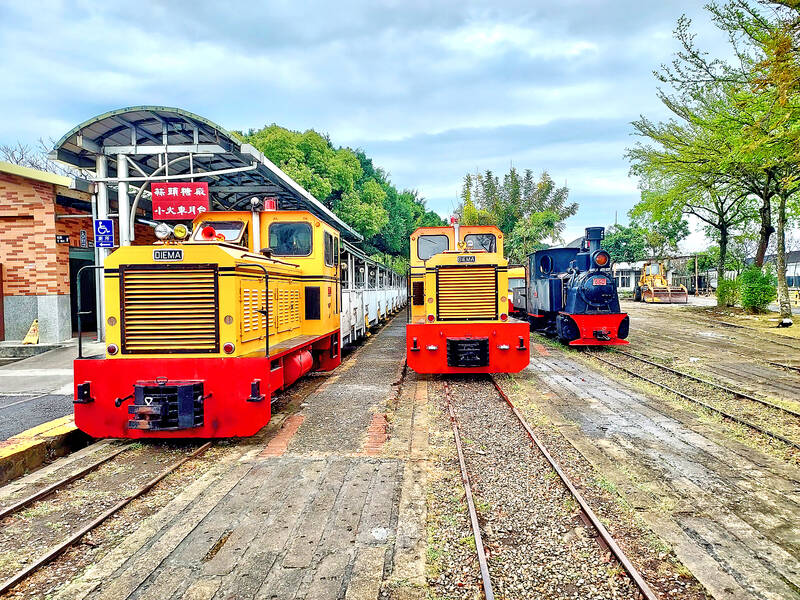
Photo: Tyler Cottenie
KAOHSIUNG: CIAOTOU
The tourist sugar train in Kaohsiung is the easiest of all to access by public transit, as the platform sits just outside Exit 3 of the Ciaotou Sugar Factory MRT Station. The 10-minute ride pulled by a diesel locomotive proceeds next to the Taiwan Railways line for a while, then passes by a graveyard and some vegetable gardens. Of all the sugar trains still in operation, the scenery on this one is certainly the most lackluster.
The ride ends at the Flower Garden Center. There are a few food vendors and a bathroom here, as well as go carts nearby and an area for BBQs. For those arriving by car, it may be easier to park on this end and get on the train here for the round trip. Train tickets can be purchased on either end of the line for both single trips and round-trips.

Photo: Tyler Cottenie
It’s hard to recommend coming to the Ciaotou Sugar Factory just for the short train ride, but if combined with other activities here it can make for a nice afternoon. You can have a picnic in the park at the Flower Garden Center or walk through the sugar factory grounds and see the mix of architectural styles among the administrative buildings, as well as the old sugarcane processing equipment, which is still in good shape. Another option is a bike ride on the trail network here, which would also allow for very close views of the sugar train along most of its run.
TAINAN: SINYING
Also relatively easy to access by public transit is the sugar factory in Tainan’s Sinying District (新營), just a 15-minute walk from the Sinying train station. The factory grounds are worth spending some time exploring as there are a number of locomotives, train cars and other equipment lying around in various stages of disrepair.
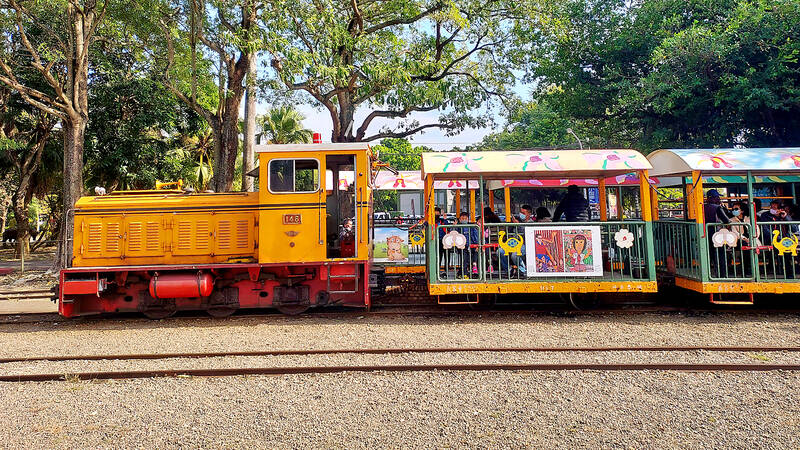
Photo: Tyler Cottenie
The train ride itself takes about 25 minutes and simply goes out and back along the same line without the chance to get off at the far end. This train actually crosses a major road along the way, forcing traffic to stop and wait as tourists wave at them from their rail cars, which crawl along at about 10 km/h.
TAINAN: WUSHULIN
Not too far from Sinying is the Wushulin Sugar Factory in Tainan’s Houbi District (後壁). This is perhaps the best overall experience out of the five sugar factories that run tourist trains. The train ride itself is more interesting as it leaves the factory and heads out into the countryside, passing through treed areas and farmland. At the far end of the ride, the train stops and lets people disembark at a platform with vendors selling snacks and drinks, including cut sugar cane to chew on and sugarcane juice. From the platform, visitors get a good view of the locomotive decoupling from the cars, turning around, and recoupling on the opposite side for the return trip.

Photo: Tyler Cottenie
The grounds at Wushulin also have more to offer than the other sugar factories. The original wooden station, surrounded by banyan trees, is well preserved and open to the public. It acts as a museum with a lot of information (Chinese only) and pictures of the station over the years. Another building houses a model of the sugar factory and surrounding area, complete with working model trains that bring the original sugar factory operations back to life before your eyes. Finally, there is a mini-train ride for children, and an earthquake simulator that you can sit inside.
CHIAYI: SUANTOU
In Chiayi, you can connect from Taiwan’s fastest rail line to one of the slowest: just outside the Chiayi High Speed Rail (HSR) station, a new platform has been built so that tourists can get off the HSR and go straight onto a sugar train that takes them to Suantou (蒜頭) Sugar Factory. Along the way, the train passes by large fields of sugarcane with expansive views of the plains. The train arrives at the sugar factory and lets people off almost 30 minutes later. The return trip can be made by train again later in the day, or by bus from the stop across from the sugar factory’s main entrance. Those who drive straight to the sugar factory can ride the train to the HSR platform and back, or take one of the two shorter rides in the early afternoon that start at the sugar factory, go toward the HSR for about 15 minutes, then return the same way.

Photo: Tyler Cottenie
It is worth spending some time walking around the Suantou Sugar Factory. The Japanese-built wooden station building has been beautifully restored and is freshly painted, as are a number of trains throughout the trainyard. Visitors are free to walk on these abandoned tracks and see diesel and steam locomotives up close, as well as sugarcane cars. Many of the buildings are still in fine shape, and at the west end of the park there is a high suspension bridge over the Puzi River for pedestrians and bicycles.
CHANGHUA: SIHU
For train fanatics, Sihu (西湖, Xihu) Sugar Factory is a must-visit. It’s harder to get to by public transit (train to Yuanlin, then a bus to Sihu, then a 1km walk) but it has something that none of the other factories operating tourist trains do: a steam locomotive in regular service. It also has diesel locomotives that run trains every weekend, but at 11am and 2pm on the last Sunday of every month, there are two special rides driven by a restored steam locomotive. Get there early to watch the staff warming up the locomotive, bleeding the lines and shoveling coal into the furnace.
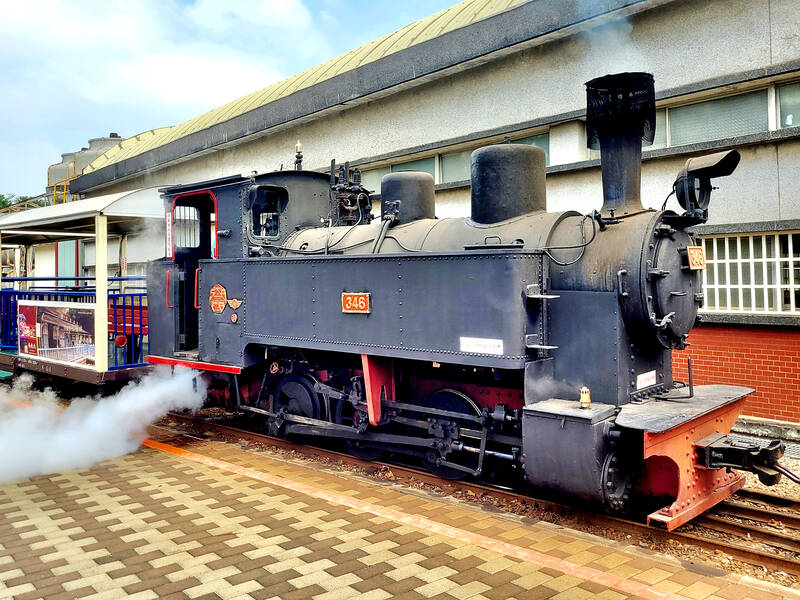
Photo: Tyler Cottenie
When the train finally starts moving, the steam engine powers up, the smell of coal fills the air and thick clouds of smoke billow out from the locomotive’s smokestack, an unfortunate side effect for the homeowners adjacent to the track; perhaps this is why the steam train only runs once a month. The train then passes by rice paddies and crosses a few roads where some people are likely to be waiting to capture photographs of the steam engine in action. It stops at another platform after about 12 minutes, and the locomotive is moved to the other end of the train for the return trip. In the meantime, passengers are not allowed to get off but local farmers do walk up and down the platform selling vegetables, fruit, snacks and drinks directly to people on the train.
For those who don’t catch the steam train, even the regular diesel train ride for tourists is different here; whereas all four of the other factories run German-built locomotives of the same model from 1977, Sihu runs a Japanese-built one from 1967. After the train ride, you may visit the small exhibit room across the tracks, and the original factory buildings, now in varying states of disrepair, which are mostly left open to the public. If at all possible, come to Sihu on the right day and see the steam locomotive in action.
For more details, visit: www.taisugar.com.tw.
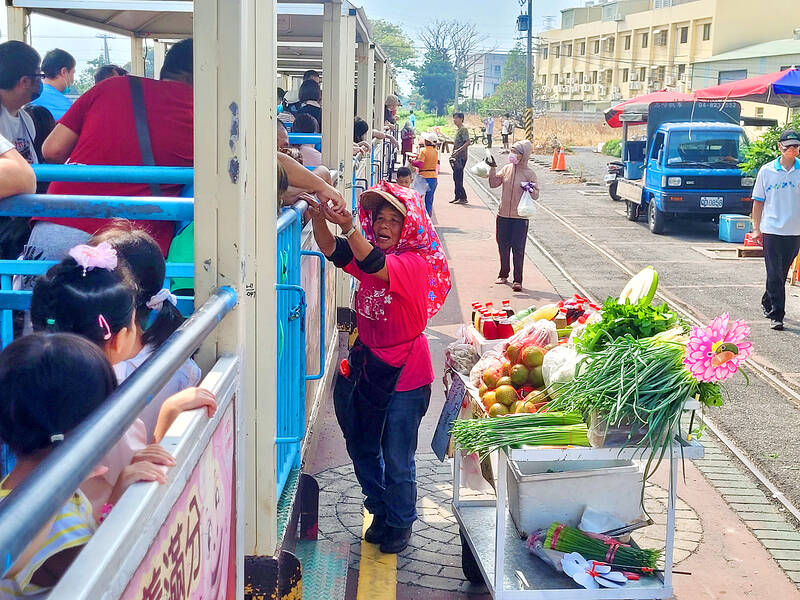
Photo: Tyler Cottenie
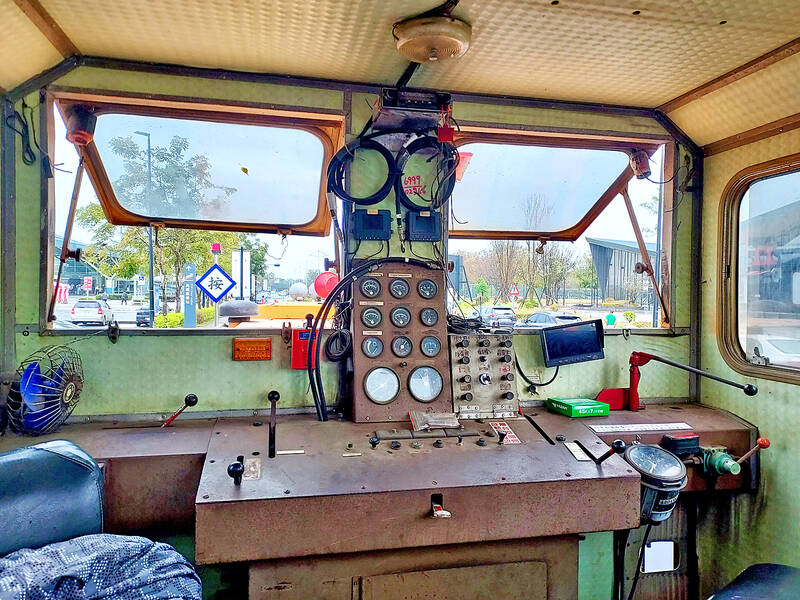
Photos: Tyler Cottenie
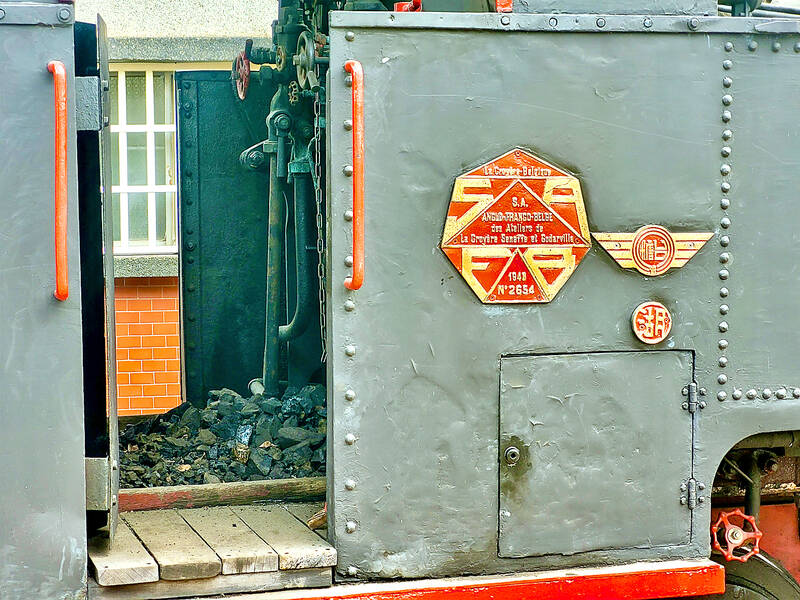
Photo: Tyler Cottenie

On April 26, The Lancet published a letter from two doctors at Taichung-based China Medical University Hospital (CMUH) warning that “Taiwan’s Health Care System is on the Brink of Collapse.” The authors said that “Years of policy inaction and mismanagement of resources have led to the National Health Insurance system operating under unsustainable conditions.” The pushback was immediate. Errors in the paper were quickly identified and publicized, to discredit the authors (the hospital apologized). CNA reported that CMUH said the letter described Taiwan in 2021 as having 62 nurses per 10,000 people, when the correct number was 78 nurses per 10,000

As we live longer, our risk of cognitive impairment is increasing. How can we delay the onset of symptoms? Do we have to give up every indulgence or can small changes make a difference? We asked neurologists for tips on how to keep our brains healthy for life. TAKE CARE OF YOUR HEALTH “All of the sensible things that apply to bodily health apply to brain health,” says Suzanne O’Sullivan, a consultant in neurology at the National Hospital for Neurology and Neurosurgery in London, and the author of The Age of Diagnosis. “When you’re 20, you can get away with absolute

May 5 to May 11 What started out as friction between Taiwanese students at Taichung First High School and a Japanese head cook escalated dramatically over the first two weeks of May 1927. It began on April 30 when the cook’s wife knew that lotus starch used in that night’s dinner had rat feces in it, but failed to inform staff until the meal was already prepared. The students believed that her silence was intentional, and filed a complaint. The school’s Japanese administrators sided with the cook’s family, dismissing the students as troublemakers and clamping down on their freedoms — with

As Donald Trump’s executive order in March led to the shuttering of Voice of America (VOA) — the global broadcaster whose roots date back to the fight against Nazi propaganda — he quickly attracted support from figures not used to aligning themselves with any US administration. Trump had ordered the US Agency for Global Media, the federal agency that funds VOA and other groups promoting independent journalism overseas, to be “eliminated to the maximum extent consistent with applicable law.” The decision suddenly halted programming in 49 languages to more than 425 million people. In Moscow, Margarita Simonyan, the hardline editor-in-chief of the